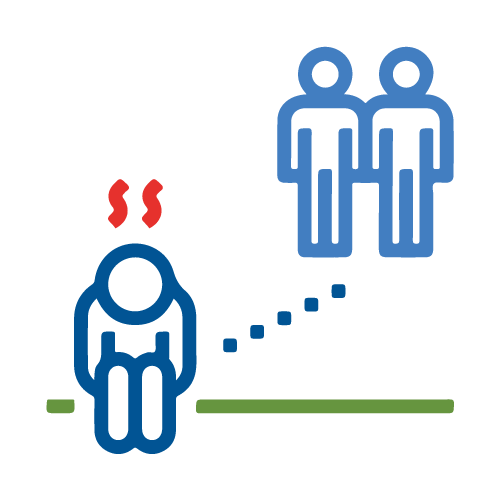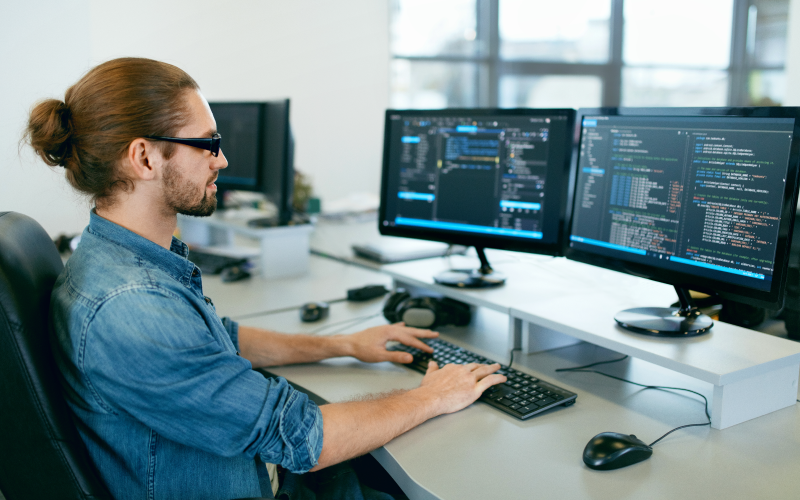Curated by: Sergio A. Martínez
They may have been happy to put the office behind them when the pandemic first struck, but software developers with social anxiety are now bracing for the return to the office. And so far, the results have been mixed; not even corporations like Apple have managed to get it right, in most cases deciding to implement policies that date back to pre-pandemic times, which are difficult to sell in the modern Tech industry we currently find ourselves in.

The main issue is that, for many, the thought of having to collaborate in person with colleagues is daunting; while the pandemic forced a lot of them to confront their fears and learn how to manage them, they’re still not sure if they’re ready to return to an office environment thanks to a widespread issue that’s becoming more and more of a challenge for the modern developer: social anxiety, a barrier to success in any field, but it’s particularly challenging in software development, where collaboration is essential.
However, by understanding the challenges workers with this condition face, employers can create more supportive environments that help everyone thrive, because right now, for many software developers, the thought of returning to the office after months of working from home is less than thrilling, and the fear of being around other people, having to collaborate on projects face-to-face, and the unique pressure of meeting deadlines at the office can all contribute to a sense of anxiety.
So, while it’s true that working in software development can be a solo endeavor at times, the best developers are aware that collaboration is key to creating a successful product, which is especially true when returning to the office (even just for a couple of days of the week) after working remotely, a challenge that most workplaces will need to consider moving forward.
As this BBC article puts it: “Anxiety has rocketed among young people during the pandemic, and although there’s little data on exactly how many people are dealing with it, it’s estimated that 12.1% of US adults experience social anxiety at some point in their lives”, so, with many questions still up in the air (if the pandemic will have a definitive end, if the job market will change, if the Great Resignation will have lasting effects on the industry), it’s important to think what this means in terms of the workplace.
The meaning of interaction

As Luis Aburto, CEO and Co-Founder of Scio has talked before about the importance of feeling part of a larger whole: “Although right now full remote work is the preferred model for many people in the tech industry, I believe that things are going to shift soon, as more of us start feeling the weight of the isolation that it builds up. After all, work can be more than just the means to make a living, it can also allow you to be part of something together, a community. The real challenge of transitioning to an effective hybrid model will be to promote and maintain this feeling of community and belonging.”
For software development teams that are Nearshore or just distributed, it can be difficult to create a welcoming environment for everyone, which is especially true for people with social anxiety, However, there are a few simple things that can help to make everyone feel more welcome and included, like providing opportunities for small-group or one-on-one interactions, even through remote means.
Alternatively, it’s helpful to create an open and inclusive atmosphere by discouraging social hierarchy and encouraging collaboration, being understanding, and accommodating of people who may need extra time to warm up or may prefer to communicate electronically; one of the challenges of software development is that it is often a very collaborative process, which can be difficult for people who may have trouble opening up and communicating with others. Asking them direct questions about their ideas or thoughts can help to draw them out, and it is also important to give them time to process what is being said. It is possible to work successfully with someone socially anxious, although it requires both parties to be willing to adjust their communication style.
“The idea of having to interact with colleagues on a daily basis, attend meetings, and take breaks in common areas can be overwhelming, but there are some silver linings to returning to the office for those with social anxiety. For one, it can provide an opportunity to reset social boundaries and gradually ease back into more intense interactions”, says Human Capital Manager at Scio, Helen Matamoros.
“Additionally, returning to the office can also give people with social anxiety a chance to practice their «social skills» in a safe and controlled environment. Of course, everyone’s experience with social anxiety is different, and not everyone will feel comfortable returning to the office right away. But for some, it may be a necessary step in getting back to a sense of normalcy.”
After all, working with others helps to ensure that everyone is on the same page, and it also allows for a different perspective to be brought to the table. However, simply standing side by side is often not enough. To have a meaningful interaction, it is important to create a culture where interactions are meaningful and welcoming, fostering connections that help people feel at ease and eager to participate, so here are a few things you can do to make sure the office is as inclusive as possible:
- Make sure they can look up someone’s name. This may seem like a small thing, but for someone with social anxiety, it can make a big difference. Back in the day, you could have name tags to make it easier to start up a conversation, but in a hybrid office with distributed collaborators, having a directory or something similar to look up teammates, leads, the management or any other person they might need is invaluable.
- Encourage collaboration. Many people with social anxiety feel more comfortable working in small groups or pairs, and by encouraging flexible collaboration, you can help create an environment where everyone feels included. This may mean having regular check-ins or setting up specific times for team members to share their thoughts and ideas or providing opportunities for people to work on projects alone or in small groups. For people with social anxiety, it can take some time to warm up, but once they do, they can be great collaborators.
- Define objectives clearly. Make sure everyone has a clear understanding of the project and their role in it. This will help to reduce any feelings of anxiousness about not being able to contribute, especially for new collaborators not accustomed yet to the rhythm of the office, as well as ensuring they have clear guidance when working remotely.
“When you have a connection with someone, it becomes easier to work together towards a common goal”, in the words of Luis Aburto, is the principle at work in Scio.
The advantage of Nearshore

Focusing on Nearshore software development is also a way to create a more supportive environment. By collaborating with other developers from around the world, software developers can work on projects at their own pace and in their own space, without the pressure of having to be in an office. In addition, nearshore software development companies often have a better understanding of the needs of workers with social anxiety and can provide support and coaching to help them succeed. As a result, workers with social anxiety can find nearshore software development to be a more supportive and confidence-building environment.
Software development is an increasingly important field and one that is constantly evolving. The traditional 9-to-5 office model is increasingly becoming a thing of the past, with attitudes and challenges in the way of hybrid or remote workplace solutions, and those companies who are willing to offer different options to their employees, as well as accommodating conditions like social anxiety right now is becoming more and more common, could allow developers to collaborate with others more easily. As the workplace changes, it’s important for both software developers and organizations to adapt, and flexible work options and open-mindedness will allow them to do just that.
The Key Takeaways
- Social anxiety is no joke, and our quickly changing landscape, in terms of economic stability, technological leaps, and pandemic flows and ebbs, will only make this condition more and more common.
- There are ways for software development organizations to accommodate and anticipate this condition among workers; being flexible and open-minded are some of the most effective.
- Options like distributed workplaces, or Nearshore development collaboration, are great for flexibility and communication, which can help deal with the increasing social anxiety that will be the norm for the time being.
Scio is a Nearshore software development company based in Mexico where we believe that everyone deserves everyone should have the opportunity to work in an environment where they feel like a part of something. A place to excel and unlock their full potential which is the best approach to create a better world. We have been collaborating with US-based clients since 2003, solving challenging programming puzzles, and in the process showcasing the skills of Latin American Engineers. Want to be part of Scio? Get in contact today!
